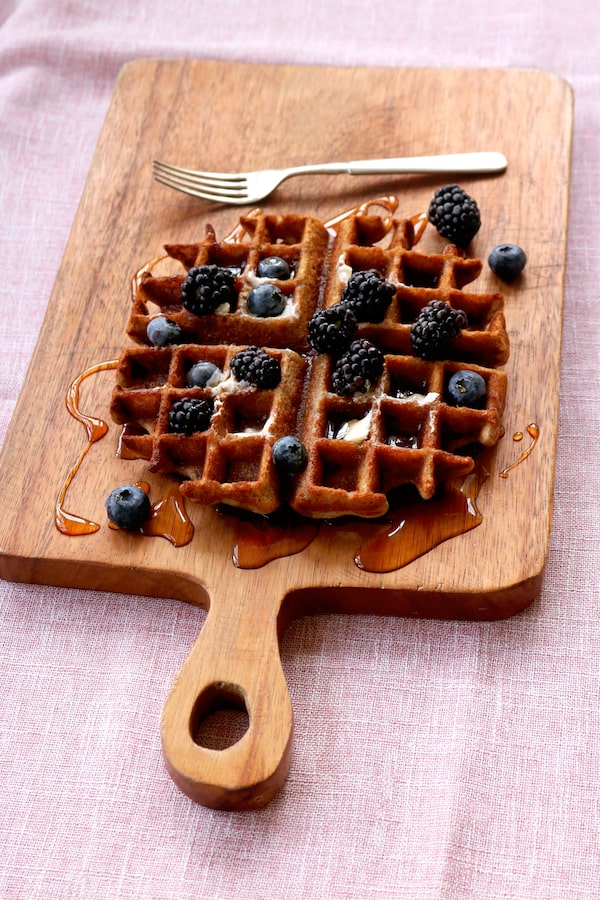
Buckwheat wafflesJulie Van Rosendaal/The Globe and Mail
Every few years, a grain that has been nourishing civilizations for millennia seems to gain a wave of popularity in the social media and cookbook world – quinoa was the darling of the 2010s, and farro (chewy spelt, emmer and einkorn wheat berries) continues to make regular appearances on food blogs and recipe reels.
Buckwheat is predicted to have its moment this year. Though most buckwheat is cultivated in China and Russia, it grows well here – most of it in Manitoba. It’s actually not related to wheat at all, but is a type of seed that is technically classified as a grain. Buckwheat is gluten-free, contains an impressive lineup of antioxidants and is made up of about 10 per cent protein – about the same as farro and a little less than quinoa – with a full set of amino acids, which is rare for a grain.
It’s nutty and toasty, particularly when roasted (often labelled “kasha”), and the groats (whole grains) can be cooked and served like other grains – in soups, salads, grain bowls and porridge for breakfast. The groats are chewier and heartier than quinoa – similar to barley. Use a 2:1 liquid to buckwheat ratio when you cook the grains, which will take 15 to 25 minutes.
Soba is the Japanese name for buckwheat, but also refers to noodles made with buckwheat flour. Buckwheat in flour form is typically found alongside wheat flour in grocery stores and is often used to make pancakes, blini and Brittany’s much-loved crêpe bretonne.
This waffle batter works for pancakes as well – as large or tiny as you like.
Recipe: Buckwheat waffles or pancakes
If you’re looking for more structure and don’t mind the gluten, you could use half buckwheat, half all-purpose flour (or any other type of flour) in these pancakes. To turn it into crêpe bretonne, thin the batter with additional milk or water to the thickness of heavy cream, and tilt the pan to coat the bottom with batter for thin crêpes.
1 1/2 cups buckwheat flour
1 tbsp sugar
1 tsp baking powder
1 tsp baking soda
1/2 tsp salt
1 1/2 cups milk (dairy or non-dairy)
1 tbsp lemon juice
1/4 cup canola or other vegetable oil
1 large egg (optional)
In a medium bowl, whisk together the buckwheat flour, sugar, baking powder, baking soda and salt. In a smaller bowl (or measuring cup), whisk together the milk and lemon juice; let sit for a few minutes, until slightly thickened. Whisk in the oil and egg (if you’re using it), then whisk into the dry ingredients, just until combined. If you like, let the batter sit on the counter for about 10 minutes – this will give the baking powder and soda time to create more bubbles before you start cooking.
Preheat your waffle iron and spray it with non-stick spray, or brush it with a bit of oil. Ladle in as much batter as you need to for the size of your iron, close and cook until deep golden and crisp. Serve immediately or keep warm in a 250 F oven. To make pancakes, heat a skillet over medium-high heat, add a drizzle of oil to coat the bottom of the pan and ladle in as much batter as you like; reduce the heat to medium and cook until the top of the batter looks matte and bubbles start to break through the surface. Flip with a thin spatula and cook until golden on the other side. Makes about four waffles (depending on their size) or four to six pancakes.